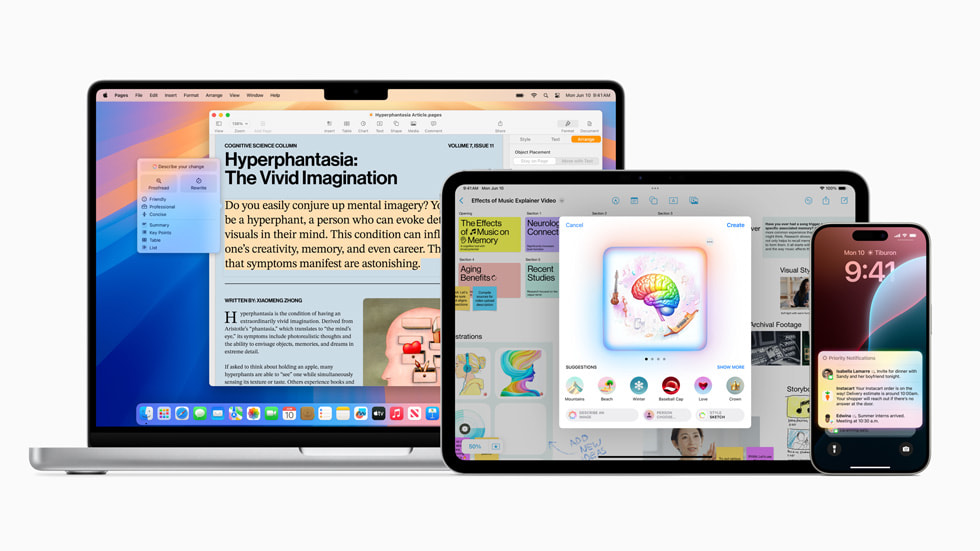Apple intelligence and new Copilot system: hands-on next-generation software for efficiency and much productivity and privacy concern
- ahatia0503
- September 10, 2024
- 2:46 am
- No Comments

The next generation of phone software is hitting the market, packed with revolutionary features that have never been seen or experienced before. These innovations are poised to drive the market to new levels of productivity and creativity. However, companies that fail to embrace these advanced software capabilities risk falling behind, much like the story of Nokia’s struggle to adapt to new hardware trends. But with all this progress, are there privacy concerns associated with such cutting-edge software? Is it truly worth diving into this new era of software that feels like something out of science fiction?
Nearly 20% of my daily hours are spent searching for a folder I was working on the previous day. It’s not just about the time wasted, but also the loss of focus on important tasks, which can lead to decreased efficiency and productivity. This raises an intriguing concept: adopting large language models to boost productivity. For me, and for many others focused on maximizing output, this is far more valuable than having a taller phone or enhanced camera performance.
Integrating new chips to enable large language models to run in the background of phone software sounds like a sci-fi concept, but it’s one worth exploring. Such innovation could propel the market into a new era of technological advancement. This would be just the beginning of large language model integration into software, potentially assisting with small tasks like:
“Hey Siri, prepare my AutoCAD file and print it.”
Or more complex tasks like:
“Hey Copilot, open Photoshop and remove the background from this image.”
This level of innovation would push the boundaries of competition, creating tools that prioritize efficiency and productivity. For those who can afford to invest in enhanced efficiency, they will gain access to intelligence systems approaching human-level cognition. This could revolutionize daily workflows, transforming the way we interact with technology.
Old Google search and ChatGpt
We all started to relies more on Chatgpt than the old Goolgle search engine
I would undoubtedly turn to ChatGPT or Gemini for tasks like searching for programming solutions or improving writing, rather than using the traditional Google search engine. It’s only a matter of time before large language models fully replace search engines like Google, whether through Gemini, ChatGPT, or similar advancements.
The same transition is likely to occur with older software platforms like Android, which will eventually be replaced by new technology that integrates large language models directly into their core. Efficiency will soon become a key competitive factor, where productivity-enhancing systems become a financial investment that some might not be able to afford.
In this evolving landscape, the role of advanced AI will extend far beyond simple queries and tasks, reshaping entire industries by offering powerful, AI-driven tools for both personal and professional productivity.
How the system realy works
The large language model integration with the actionable task combine multiple machine learning tools such as voice recognition , image recognition , natural language processing and contextual intelligence
The seamless experience we now enjoy with AI-driven tools is the result of a sophisticated combination of machine learning models that have been meticulously fused together. These models span various domains, each serving a unique function. For instance, vision-based tasks, like those seen in Apple Vision, rely heavily on advanced image recognition and processing algorithms, enabling devices to interpret and interact with visual data more intuitively.
On the other hand, text-based models, which have been in development for decades, focus on natural language processing (NLP) to predict, interpret, and generate human-like text. This can include tasks such as writing, coding, and even real-time translation. These models have now reached unprecedented levels of accuracy and fluency, making them indispensable for tasks that rely on language comprehension and generation.
Perhaps the most revolutionary development is the integration of large language models (LLMs) into the backend of software systems. This new concept, as seen in recent iterations of AI-integrated operating systems, opens the door to a new level of interactivity and automation. These systems not only process user inputs more efficiently but also anticipate needs and provide intelligent assistance across multiple applications.
A key component of this AI evolution, particularly with Apple’s intelligent ecosystem, is its deep integration of on-device machine learning with user data.
However, despite privacy concerns, the efficiency and productivity gains that come with this new era of software are hard to ignore. Apple’s AI-driven intelligence, for example, doesn’t just enhance single tasks but creates an interconnected ecosystem where your device predicts and assists with your workflow. Whether it’s through visual recognition, language processing, or backend automation, these intelligent systems mark a leap forward in user experience, pushing us toward a future where AI becomes an integral, trusted partner in our daily tasks.
Old phone model such as Nokia stories
Many of the recent companies focus on the hardware and fall behind adapting with the large language model technologies
We all remember the robustness of Nokia’s hardware, but was the downfall really due to foldability or camera sharpness? The reality is, it wasn’t about the hardware at all. The core issue was the operating system—the “driving system”—which failed to adapt to the rapidly evolving software landscape. In today’s era, companies must prioritize not just hardware innovation, but also the integration of advanced, adaptable software systems to remain competitive.
I’ll dive deeper into the data privacy concerns associated with this new wave of software, so you can fully grasp the challenges and risks involved. Understanding these issues is key to navigating the potential pitfalls of AI-driven technology and ensuring that privacy concerns are addressed without sacrificing innovation.